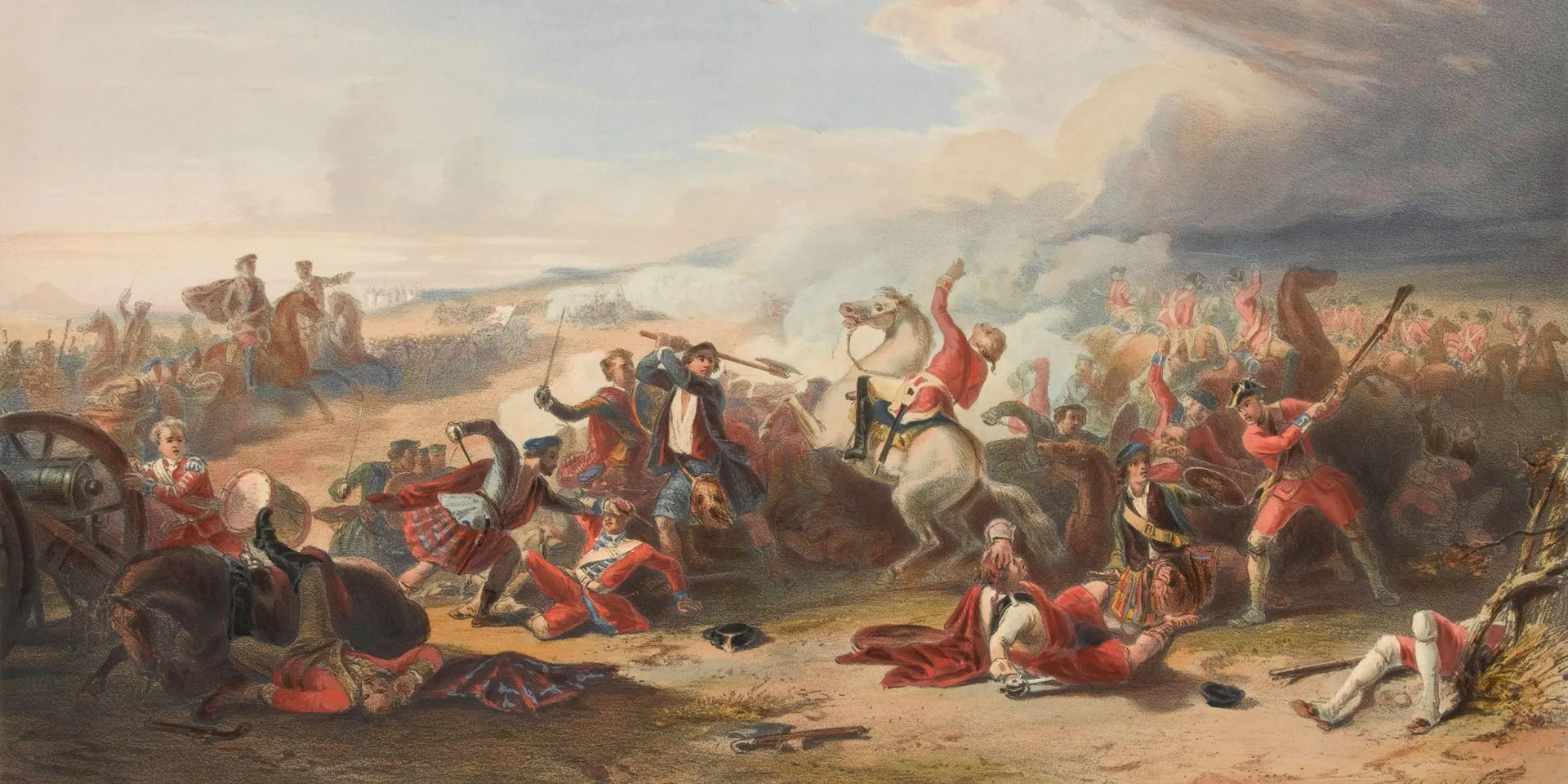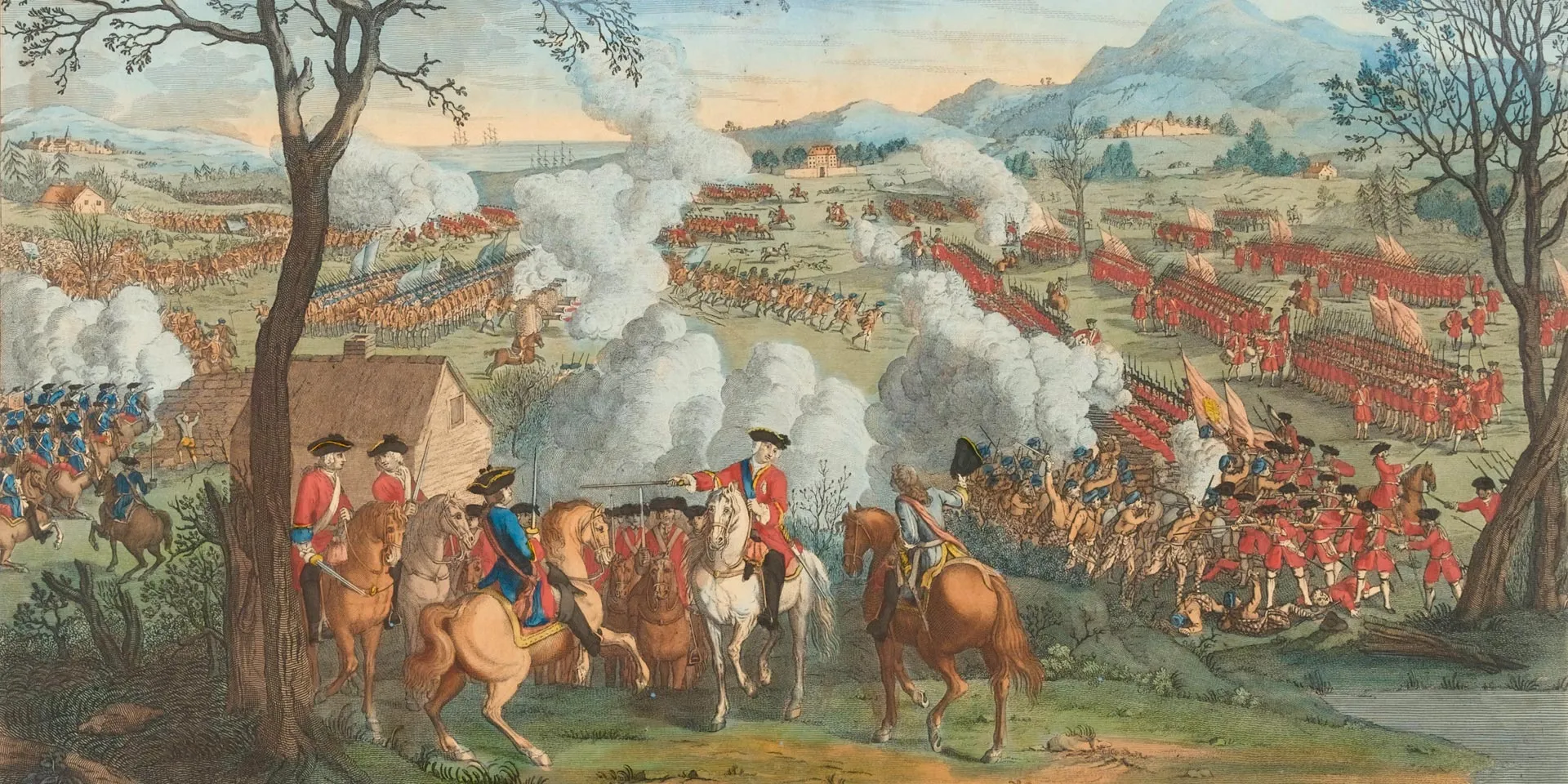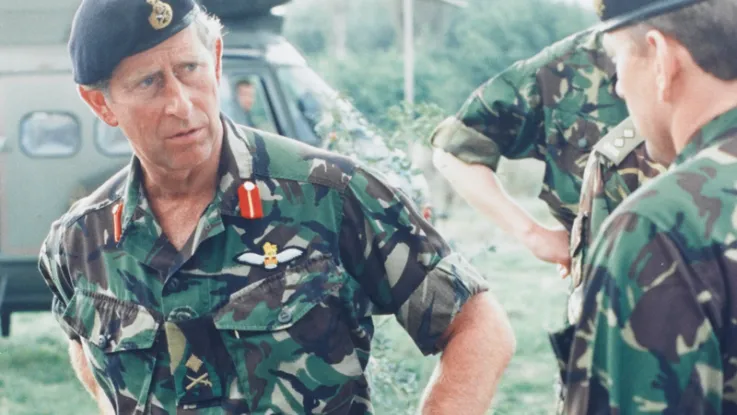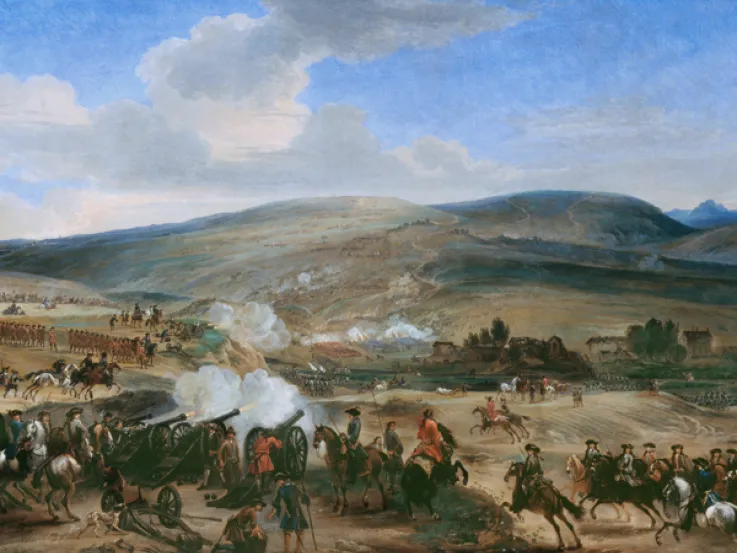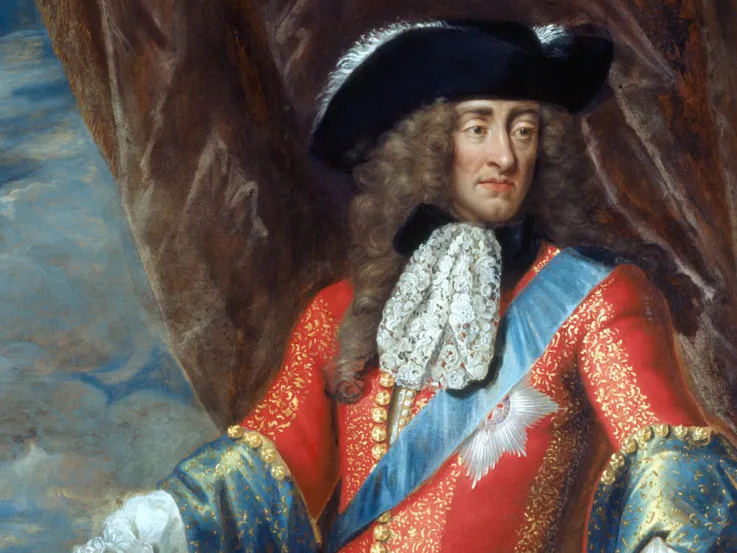Overthrow
In 1688, concerns about King James II and his supposed designs on an absolute style of monarchy came to a head. Parliament deposed the Roman Catholic ruler in an act that was immediately hailed as a ‘Glorious Revolution’.
James was succeeded by his surviving daughters from his first marriage - first Mary and then Anne - both of whom were Protestant. But when Anne died in 1714 leaving no heir, Parliament replaced the Stuart dynasty with their German cousins, the Hanoverians.
In doing so, Parliament overlooked the claim of James’s son from his second marriage, James Francis Edward Stuart, who was Catholic. 'The Old Pretender’, as he later became known, had been living in exile in France, where King Louis XIV had recognised him as the rightful heir to the British throne.
The Fifteen
On 6 September 1715, John Erskine, the 6th Earl of Mar, raised the Stuart banner at Braemar in the Scottish Highlands. Mar had supported the accession of the Hanoverian King George I the previous year, but soon found himself out of favour. He now hoped to restore his prestige and influence by leading a Jacobite rising.
He quickly assembled an army of 6,000 men. Other Jacobite forces formed elsewhere across Scotland and the north of England.
The British Army, which was due to be reduced in strength following the War of the Spanish Succession (1702-13), rapidly set about raising additional regiments. Even so, with many soldiers still deployed on the Continent, government forces in Scotland were initially too few in number to contain the rising.
In October, a Jacobite force was sent south into England, expecting to gain popular support on its way. Instead, it was largely met by hostile militia and won over few recruits. The Jacobites advanced as far as Preston, where they were defeated by the army of Lieutenant General Wills on 12 November 1715.
Sherrifmuir
Back in Scotland, Mar had been more successful. His army was able to defeat a smaller government force at Sherrifmuir, near Stirling, on 13 November 1715. But, instead of following up this victory, he fell back towards the Highlands.
He was pursued by John Campbell, 2nd Duke of Argyll, who was now being steadily reinforced. Mar’s army, on the other hand, was gradually shrinking through desertion. Not even 'the Old Pretender' himself, who arrived by ship from France on 22 December 1715, could rouse his followers.
The rebellion eventually petered out in February 1716. James Stuart returned to France, along with Mar, leaving his Highland followers to fend for themselves.
The Rising of 1719
A second attempt to reclaim the throne for James Stuart began in March 1719. This time, the Jacobites had support from Spain, which was keen to keep the British occupied in Scotland while it attempted to regain territories lost in the War of the Spanish Succession (1702-13).
An invasion force of 27 ships, carrying 5,000 soldiers, set sail from Spain aiming to rally the Scottish clans. But most of the ships were dispersed by storms and only 300 Spanish troops managed to land on the west coast of Scotland.
The Jacobites established their headquarters at Eilean Donan, only for the castle to be destroyed by Hanoverian warships a month later.
The attempt to call out the clans ultimately yielded only about 1,000 recruits. On 10 June 1719, the Jacobites were defeated at Glenshiel by the forces of General Joseph Wightman.
Highland guard
Over the next 20 years, the government tightened its hold on the Scottish Highlands. General George Wade built roads to open up inaccessible areas. Fort William was strengthened and other forts were constructed.
Independent Companies of Highlanders were raised from clans loyal to the government to police the region. The most famous of these was 'The Black Watch'.
The Forty-five
In July 1745, Charles Edward Stuart, the son of James Stuart, arrived in the Hebrides aboard a French frigate. On 19 August, he raised his standard at Glenfinnan, near Fort William. About 2,000 Highland clansmen rallied to his cause.
On 17 September, ‘the Young Pretender’, as Charles was nicknamed, entered Edinburgh and proclaimed his father as King James III with himself as Regent.
At the time, most of the British Army was fighting on the Continent in the War of the Austrian Succession (1740-48), so the government initially had to rely on inexperienced troops. General John Cope’s soldiers were defeated by the Jacobites at Prestonpans, outside Edinburgh, on 21 September 1745.
Invasion
In early November, Charles’s 6,000-strong army crossed the border into England. It captured Carlisle and marched south through Lancashire in the hope of attracting English support.
To deal with this crisis, the Duke of Cumberland, the youngest son of King George II, was recalled from the Continent with many of his battle-hardened regiments. The Militia was also called out and new volunteer regiments were raised.
On 4 December 1745, Charles entered Derby. He was now only 200km (125 miles) from London, but his army was tired and weakened by desertion. Few Englishman had joined him and the French invasion he had hoped for had not materialised.
Retreat
Charles's generals were concerned that they might be trapped by government forces and he reluctantly agreed to retreat. By late December, his army was back in Scotland, where it received reinforcements, including some French troops.
On 17 January, the Jacobites defeated General Henry Hawley at Falkirk. However, they were eventually forced to retreat towards Inverness, pursued all the way by the Duke of Cumberland.
Culloden
On 16 April 1746, the two armies faced each other at Culloden, near Inverness. Pounded by artillery, the outnumbered Jacobites launched a fearsome Highland sword charge. Although Cumberland’s left came under heavy pressure, his soldiers held firm with their bayonets. Charles’s army was routed and the 'Bonnie Prince' was forced to make a dramatic escape to France.
Many Englishmen and Lowland Scots regarded the Highlanders as savages, to whom the rules of civilised warfare did not apply. After Culloden, wounded Highlanders were bayoneted where they lay and Charles’s fleeing soldiers were ruthlessly hunted down.
Repression and stability
The battle was followed by a period of severe repression in the Highlands. Cumberland’s men employed tactics already used against the Maroons in Jamaica. They executed prisoners, burned settlements and seized livestock, earning their commander the nickname ‘The Butcher’, at least among his political opponents. Highland culture was repressed and the clan system dismantled.
The Hanoverian victory at Culloden put an end to Jacobitism as a significant political movement. It brought long-lasting stability to British politics and, by denying France the opportunity to cause trouble in Britain's own back yard, paved the way for global expansion.
Many Lowland Scots celebrated the defeat of the Highland Jacobites for religious or economic reasons. The Union between England and Scotland was secure, as was the Presbyterian system of church government. Economic progress came to the Lowlands through the Union and access to the trade routes of its empire.
Ironically, Charles's defeat brought about an influx of Highlanders into the British Army. Many saw service against the British Empire's enemies in North America and elsewhere as a way of reviving their fortunes.

